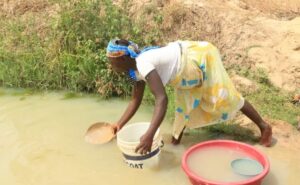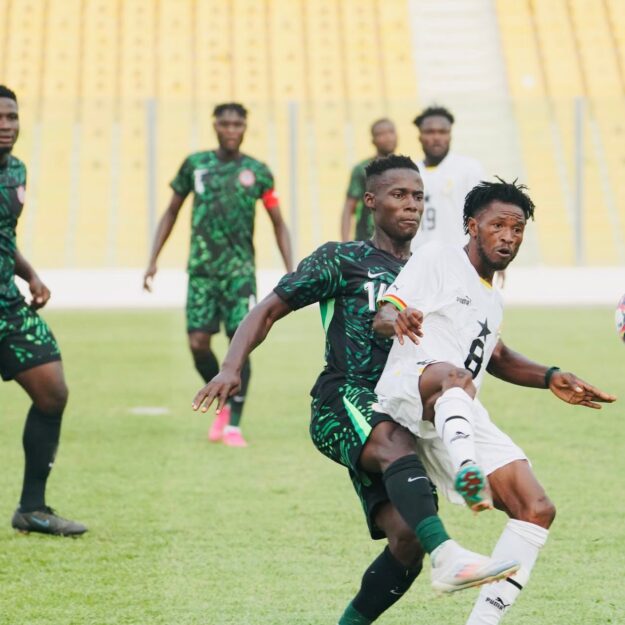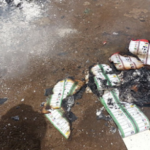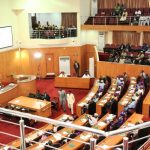By Dr Pascal Ebhohimen
Background
Covid-19 pandemic started in Wuham China laboratory (bio) or as claimed from exotic animals and birds in 2019. An infection and a contagion started with the first group of persons in China. The obvious response was to isolate those guys for investigation of the nature of the virus, further tests and preliminary treatment. Some died and a few survived. Clearly, it became evident that the disease was contagious and based on the benefit of hindsight , initiated measures like use of hand gloves, face masks , alcohol based sanitizers and washing of hands with soap. Then the idea of social distancing was added when the first index cases were detected in USA, UK, Spain and Italy. The disease is now worldwide and over 196 countries are suffering from this pandemic.
The challenges of the Covid-19 pandemic are somewhat similar globally but the solution in terms of the hazards control in my view would vary from generic measures to more specific coping strategies reflecting differences in the various countries along lines of population, demographic patterns and factors, socio- cultural practices, economic challenges faced by the country, state of their health facilities and level of education and literacy levels.
It is in the light of the international differences I intend to share my thought on some coping strategies within the ambit of the generic measures in Lagos state and perhaps in other states in Nigeria.
A Management Approach
I intend to use a management approach of the Open systems theory to examine how the situation can be better managed. The theory looks at what goes into the entire process as resources inputs, how the process is managed, the expected outputs/ outcomes and feedback from the environment for system’s review and progress in the fight against the virus.
I wish to cover:
- A) Fighting the pandemic
- B) Managing the palliatives
Fighting the Covid-19 pandemic
1) Generic measures:
- a) Lockdown protocol
- b) Physical distancing
- c) Social distancing
- d) Wearing of face masks
- e) Washing of hands/ sanitizers
1) Total lockdown (hard core):
- a) Stay at home by every one for the first 14 days. All local government areas in Lagos. No entry into and away from Lagos. 100% enforced.
Exceptions: service personnel housed in designated centres in the state; and work during the day and night by shift. This should be properly organised and government and private sector organizations to partner. This is to allow the managers to have control over people for purpose of testing, tracking of cases to halt further spread of the virus.
- b) Identification of index cases.Tracing technique, identification, isolation and testing tools are used.
- c) Fact finding and tracking of contacts with index persons.
- d) Using Mapping technique to segment the state and identification of index cases and infected persons by area in the map.
- e) Using data from(s) to prioritize areas for purpose of testing other normal individuals for identification of infected individuals.
Testing is key to the success of the fight. Prioritization is the tool required to make testing feasible and achieving pareto optimality. This planning approach based on pareto optimality will ensure that if resources and testing are targeted to critical areas of high infection (20%), 80 % progress would have been made in the fight. Schools for instance, can be segregated and treated differently.
- f) Conduct testing based on cluster sampling tech, and if results show that no index case(s) had been identified in lekki area, says from toll gate through lekki phase 1 to Victoria Garden City.Then the entire area can be segregated and lock down for 14 days to give assurance of the absence of spread and allow time for further systematic sampling, after which restrictions within that area are lifted for local small businesses and schools to operate. No entry and no exit of people outside the catchment area apart from those in essential services who for the period are kept isolated from this large catchment area already tested. This phased approach to relaxing restrictions on total lockdown is realistic and practical to minimize social and economic costs associated with protracted lockdown.
The testing group moves to another high risk areas, with clear boundary definition. The same process is gone through to identify infested persons and again those identified individuals are taken to isolation centres for treatment. And again lockdown restrictions are imposed for 28 days at the maximum.
Further randomised tests are done and if analytics show downward curve, then temporary openings of small businesses can start.
This systematic process of identification, testing and retesting would lead to a temporary lockdown rather than having lockdown protracted.
Overall, using graphics, managers are able to track and initiate actions for the lifting of restrictions for small businesses and schools.
This approach will ensure the social and economic costs e.g. riots, stealing, etc by irate vulnerable individuals would be reduced if not eliminated.
- g)Tracking, monitoring and Reporting:
As a process strategy, managers should be able to track progress made in each catchment area in the map of the entire state, categorized by riskiness level and then report using appropriate analytics of progress in each area.
The stakeholders need to know continuously not just the number of cases identified, number survived and number of deaths but essentially using graphics to show categories of risk areas, % of persons tested, weekly trends and patterns across the states.
Based on cut off points and safety standards, zero risk areas are segregated and temporary openings of business and movement of people are allowed but still comply with other safety measures: wearing of face masks, hand gloves particularly for service providers, washing of hands and sanitizers were available.
2) Distribution of palliatives
This was a great initiative and wonderful efforts made by the Lagos state government and the various private sector organizations so far. Expectedly though, there have been a number of issues raised in respect of planning, coordination, and transparency. To avoid self defeating strategies and inequity in the distribution of palliatives by different groups operating independently, I am of the view that the entire exercise should however be carefully planned and coordinated by a central working group by the government working jointly with nominees from the private sector donors.
The highly disadvantaged, underprivileged and daily wage earners in small businesses in different areas in Lagos state are the target groups. These are the vulnerable groups that could react negatively (riots, violence, stealing) for lack of food and ill health during protracted lockdown restrictions.
So, for short time restrictions, and under severe conditions, the distribution of palliatives or direct cash transfer (for needs of people different) was a welcome development.
First, there should be a clear planning as a process strategy. Initially, because of the unprecedented nature of the pandemic, time was perhaps an issue to plan ahead.
But the process of fighting the pandemic would require some planning to achieve the desired outcome.
The plan for the allocation should clearly state the objectives to be achieved, identification of priority areas based upon the riskiness level of the area/ level of vulnerability matrix , how to distribute the cash or food items from the centrally coordinated point.
It is also important that the action plan includes the projected number of vulnerable individuals by household, assisted by Heads of community, church or mosque, in those areas to be served. Valid and reliable data was critically imperative for this to happen (data integrity or availability may be a problem).
The time line and unintended consequences and how to deal with such cases would be anticipated and determined.
It is possible with this kind of planning and proper execution to use appropriate prioritization matrix to rationalise areas that must be attended to first. For instance, zero risk infested areas with their small businesses and intra area movement would be given lesser priority in terms of timing of distribution of palliatives. More importantly, high risk in terms of vulnerability would be given higher priority in the distribution of palliatives.
With effective tracking and reporting mechanisms, feedback information is obtained for reviewing the ongoing process, take corrective actions and make improvements.
Transparency and openness are critical issues that are addressed in an exercise of this nature.
Great lessons should have been learnt by government and private sector organizations to invest in developing small and medium scale businesses in support of the less privileged people in our country.
In the Chinese proverb, “”rather than giving a hungry man fish to eat, teach him at the right time and place on how to fish”.
God will save us as “there is no art to find a mind’s construction on the face” as none of us no matter our thinking or mindset, has the exact solution to the Covid-19 pandemic.
Covid-19 pandemic and education: Challenges & Coping strategies
Challenges:
1) Most children are at home not fully engaged in learning
2) Some parents are not educated or literate to engage their children
3) Private lessons cannot be held in these homes because of the stay at home directive
4) Most of these children are hungry and lack sufficient food
4b) Most poor homes don’t have computers or internet access or regular electricity or generator set
4c) Those with smart phones don’t have data to use internet or even WhatsApp platform
5) Even if they return to school, the physical distance restriction will continue to apply between students/ pupils and between them & teachers.
6) The school calendar is already distorted.
7) Teacher contact hours with students will be reduced
8) Curriculum issues: scheme of work, topics, practical lessons, group activities, teaching methods etc are affected
9) Teachers & students had experienced learning gaps and remedial issues are evident
10) Even commuting to and from school by walking, public transport, busings are challenges in respect of physical distancing
11) Most public schools having computers are in bad conditions but need to be serviced.
12) Many schools don’t have internet access
13) Electricity supply is not regular and many don’t have standby generator set. Or regular petrol or diesel to power them
14) The SSS3 student’s preparing for WAEC examination have very short time left. Also for the JSS3 preparing for BECE in Lagos state. Teachers have to put in more contact hours with these students. Students studying time will increase because of crowded topics not yet covered.
15) Inspectors of education have more visits and more supervisory activities to carry out because of the likely variations in standard of practice across schools.
16) Normal in- service training and seminars for teachers will be halted for more instructional time for students.
17) Practical activities particularly for the science subjects are impaired for lack of time.
18) Extracurricular activities and other life skills acquisition, and clubs’ activities will be non- existent during this period.
19) Cost of education will rise because the schools have to spend more money acquiring ICT, internet facility, sanitizers or soap for washing hands, face masks etc
20) Private operators would have challenge collecting fees as most parents would not have the means having being out of work for weeks.
21) The government has to expect rising cost of education due to inflation and impact on the budget for schools as expenses on instructional materials will rise.
22) Examining bodies will have crowded programmes in their hands
23) The school calendar will be affected: September to July.
Coping strategies
Immediate/ short term measures
1) While still at home, students / pupils need to be engaged in learning. Some Schools (mainly private schools) are using online learning (internet linked). Others complement this with telephone, WhatsApp platform to engage students/ pupils. They however need data to take part. Regular electricity supply to charge phones.
My school (Trainfield International School) for example has used this method, teachers guiding them to study at homes free of charge and parents are happy about it. School owners and some parents support teachers with stipend to buy data for this home service.
Also use house party or zoom cloud meeting to engage small group of students to interact and discus topics, questions and answer sessions. It is working but only few students with smart phones at home have access.
Medium/ long term strategies (1 to 5 years)
1) Government needs to invest more and intensify efforts in providing adult educational opportunities for the illiterate parents.
2) Government needs to set up computer centres with internet access within catchment areas for shared services among group of public schools for purpose of online e learning programme. They could partner with internet providers. For schools that already have computers, these can be serviced and internet access provided.
3) Teaching methods and frameworks will need to change in line with advances in ICT.
In my school for instance, I have a mastery learning programe, a framework for online learning for the past four years.
This is the future of education in Nigeria and has been in practice in the past one or two decades in the advanced countries. It can be complimentary to the traditional pedagogical approaches.
It radically improves the continuous assessment programme. There are in built e- coaches that support self study by students/ pupils.
4) Educational authorities, teachers , administrators need to go back to study for retooling , unlearning and relearning new ideas and knowledge to acquire the new information capital & online learning technology and thus able to cope with imminent transformation in education.
5) The emerging knowledge and digital economy will link properly with the educational system. So, industry operators need to show more interest in the education sector by investing in it.
6) Government and private benefactors during this period and indeed beyond should target school children for the distribution of palliatives, first medical aids and food in particular.. Investment in nutrition and health for school children is right investment in the education of these children.
7) Government needs to engage more educational consultants and professionals as routine advisors partnering with educational authorities and inspectors in providing quality assurance and maintaining standards in schools.
Other suggestions
1) Public school teachers and indeed private school teachers as part of planning for school resumption should visit Covid-19 testing centres to have clean bill of health. Children are not likely to be infected as data globally have shown an infinitesimal % of affected children.
2) Provide face masks (preferably disposable ones for easy breathing in crowded classrooms for all schools to be uses by teachers, non teaching staff and children
3) Provide soap and water for washing hands.
4) Provide sanitizers where water and soap not readily available.
5) Limit parents and visitors to schools until further notice.
6) Every school should have a nurse to administer first aid medical attention..
7) Government needs to open up public e – library, within catchment areas in local govt council areas for groups of schools. Private sector organizations need to partner with government in this respect. Government in turn provides enabling environment for private sector organizations to thrive.
We used to have public libraries for poor people who cannot afford private home TV, internet access, books, CD players and TV for children to listen or take part in learning opportunities offered by recorded tutors and coaches.
8) Parents encourage buying TV and record or CD player or radios for subject matter treatment
UNESCO’S FINDINGS or POSITION
1) 1.723 billion learners
2) 191 countries & 5 others local
3) 98.4% of world’s student’s population
4) Cambridge international Examination o/level & A/level may/ June cancelled
Impact
- student loan/ debt
- digital learning
- food insecurity
- Learning is disrupted
- Access to child care health care, housing disability services
Recommendations
- Distant learning programme
- Open education application & platforms that teachers and students can use and learn remotely
Hazard controls
- Short term closure: to clean or disinfect if an infected person has been in school
- Social distancing: cancel field trips, morning assemblies, large gatherings, physical education, choir or music activities, cafeterias
- Increase the space between desks..
- Staggering arrival & dismissal times
- limit nonessential visitors
- Using a separate health office location for children with flu-like symptoms
Consequences of school closure
- Access to education
- Quality of education
- As at March 12, more than 370 million children were out of school globally
- High social costs.
- High economic costs
- Unintended strain on health care system
- Unequal access to technology
- Unequal access to education resources
Question sent to me:
How do you achieve social distancing in public schools especially those with huge number of pupils or students?
My answer:
Yes, public schools have very high school enrolment. And social distancing is necessary to protect people from infection. Yet, in the traditional, pedagogical approaches, it would seem impossible to achieve it. Obviously there is disruption of learning in the formal education system. But you can deal with the lack of social distancing challenge or hazards in the following ways (immediate/ short term measures as you cannot continue to deny them access to learning.
1) Staggered arrival and dismissal times (morning & afternoon sessions), by so doing you break up the large school into small size schools (in terms of head counts)
2 Ensure no group activities, assemblies, music or choir groups, physical education in the first 28 days of resumption.
3) Ensure buses are used to convey children homes, for the day schools. For boarding, create communities of homes with support staff and teachers fully residential and have been tested and have clean bill of health, confirmed after 28 days of resumption
4) Space sitting arrangement including desks.
5) use all other complimentary safety measures not just physical distancing , including washing of hands with soap, use of disposable face masks ( Government partnering with private sector benefactors) to do so.
You can’t continue to lockdown because of impact on learning and loss opportunities in terms of lifelong opportunities, despite attempts to introduce online, digital, radio and TV programmes, video. Etc. Access to learning gets worse because the disadvantaged and less privileged children who don’t have access to technology, internet connectivity, no electricity etc
Also their parents will back to work. Forget about palliative, politically motivated. We don’t have a social safety net arrangement in the governance architecture in this country. So keeping workers at home, protracted, is not sustainable. Social costs and economic costs as irate Nigerians would cause further damage to the fight.
The only option in the short term is to open schools and adopt hybrid approaches. After all, with good nutrition, free lunch programme (parnership of govt and private sector), their immunity is better and less susceptible to infection. Global evidence in fighting Covid-19 pandemic supports that children are less affected.
Over the long terms, government should invest more on adult education, focusing on the illiterate parents of these school children to acquire digital skills so digital and online learning could be used to complement traditional learning practices.
This is the practice worldwide. After Covid 19 pandemic, as part of strategic thinking with this lockdown experience now government should invest on online learning and distance learning programmes.
This graphical illustration of the situation in Nigeria suggesting an increasing number of infested cases over this short period is worrisome.
Despite the lockdown restrictions in Lagos, Abuja and Ogun which are recognised as epicentres, the number appears to be on the increase. Could it be because the compliance level is low, the tracing, identification and testing done have been ineffective or inadequate, or several infections had taken place in different cities and communities in Nigeria since the outbreak of the virus in Wuham China that we never knew about before the first index case was found in Nigeria, February or so this year. Whichever is the case, the fact remains that the number would likely grow in the weeks ahead particularly now community transmission has started.
Now with the partial or phase lifting of the lockdown restrictions in a week’s time in the three states including the FCT, it is highly uncertain how the situation is likely to be. It is likely to be worse bearing in mind some activities that could compromise the effectiveness of the hazard control measures would commence.
Under the condition of partial lockdown, I think a more systematic approach that involves segmentation of the Lagos state into identifiable areas on the basis of the riskiness profile in terms of the relative distribution of the total infected cases so far could be the basis of prioritization for the purpose of testing. Testing activity should be intensified.
Once the people in these areas are full tested, they then move to the next level of moderate risk areas, under lockdown, testing is again carried out, and so on until the entire areas in the state are covered before total lockdown restrictions are removed. I do not think the one week left for total lockdown in the entire state will be adequate for this kind of systematic testing that could achieve the desired result. There should be no entry and no exit of people into Lagos as President directed except for essential services and those involved should be closely monitored and screened at intervals.
It is only then when comprehensive testing using systematic sampling technique in each risk bucket that full business activities including opening of schools could commence.
The entire process will be monitored and trend or pattern reported graphically to know if substantial progress had been made.
CONCLUSION
I suggest that schools should open but to adopt a hybrid approach which will ensure the hazards control measures for preventing infection are in place and digital learning( zoom cloud meeting or house party for interactive session) where available should be used to compliment classroom learning that is devoid of group activities in the meantime.
You may be interested

2024 CHANQ: History Not Kind To Us Against Ghana –Ogunmodede
Webby - December 24, 2024Home-based Super Eagles coach Daniel Ogunmodede says history has not been good to Nigeria when they face rivals Ghana.The home-based…

Ex-Chelsea Star Oscar Returns To Boyhood Club Sao Paulo
Webby - December 24, 2024Former Chelsea midfielder Oscar is returning to his Brazilian boyhood club Sao Paulo after 14 years, which included a long…

‘I’m Incredibly Proud’– Arokodare Talks Up Genk’s Unbeaten Home Streak
Webby - December 23, 2024Tolu Arokodare is full of excitement followingGenk’s historic victory over Anderlecht, reports Completesports.com.Sunday’s win at the Cegeka Arena was the…

























![American Pastor, David Wilson Seen Eating The Box Of Woman Who Isn’t His Wife [Video]](https://onlinenigeria.com/wp-content/uploads/2019/10/american-pastor-david-wilson-seen-eating-the-box-of-woman-who-isnt-his-wife-video-150x150.jpg)









